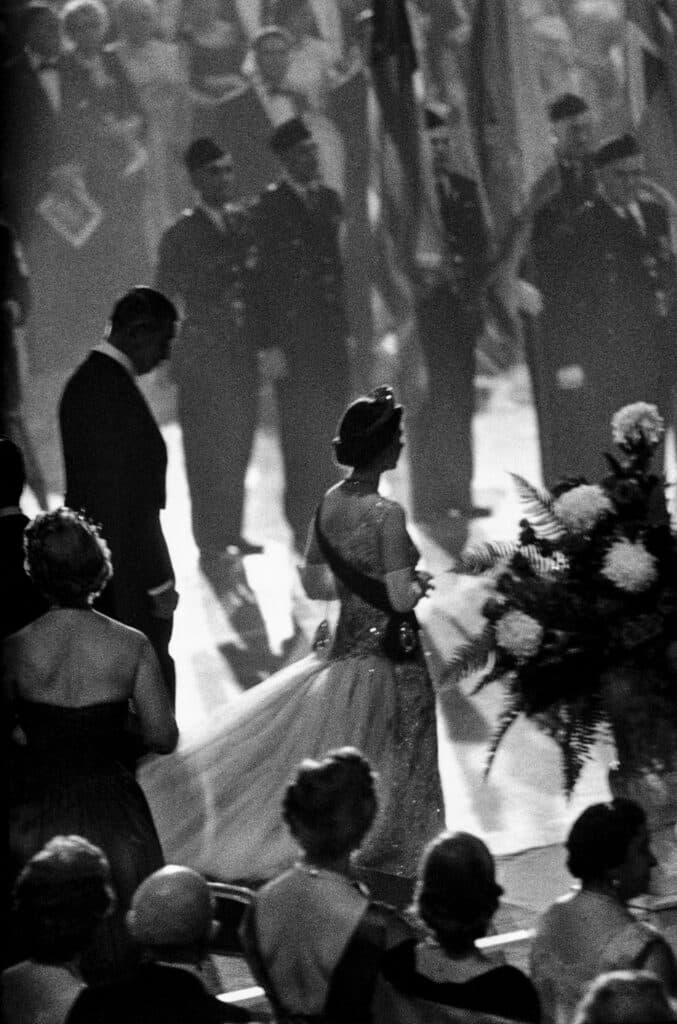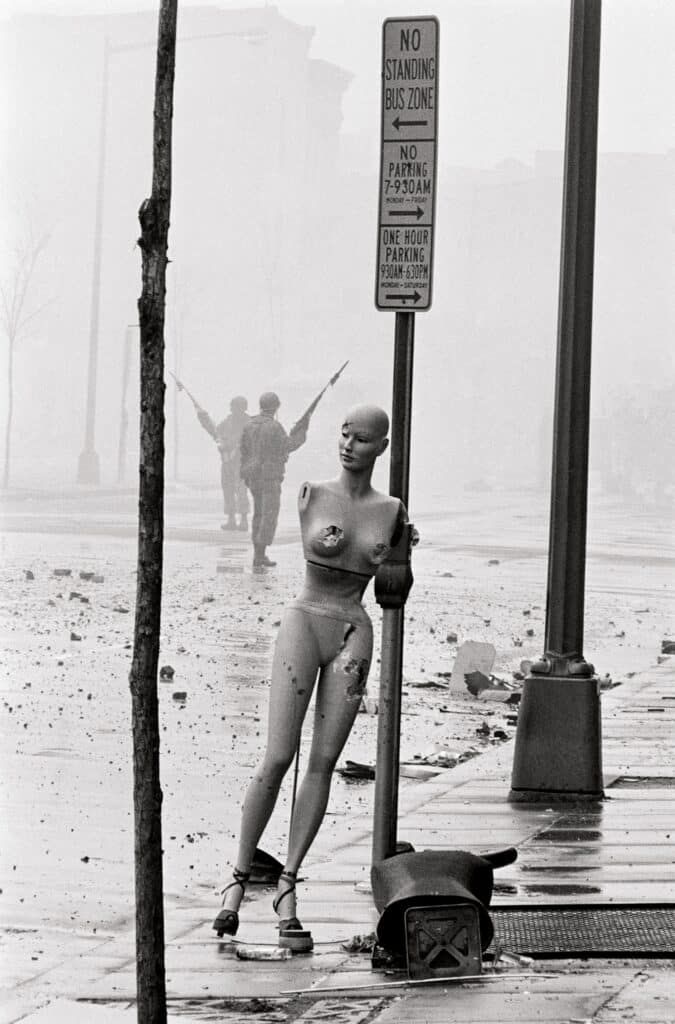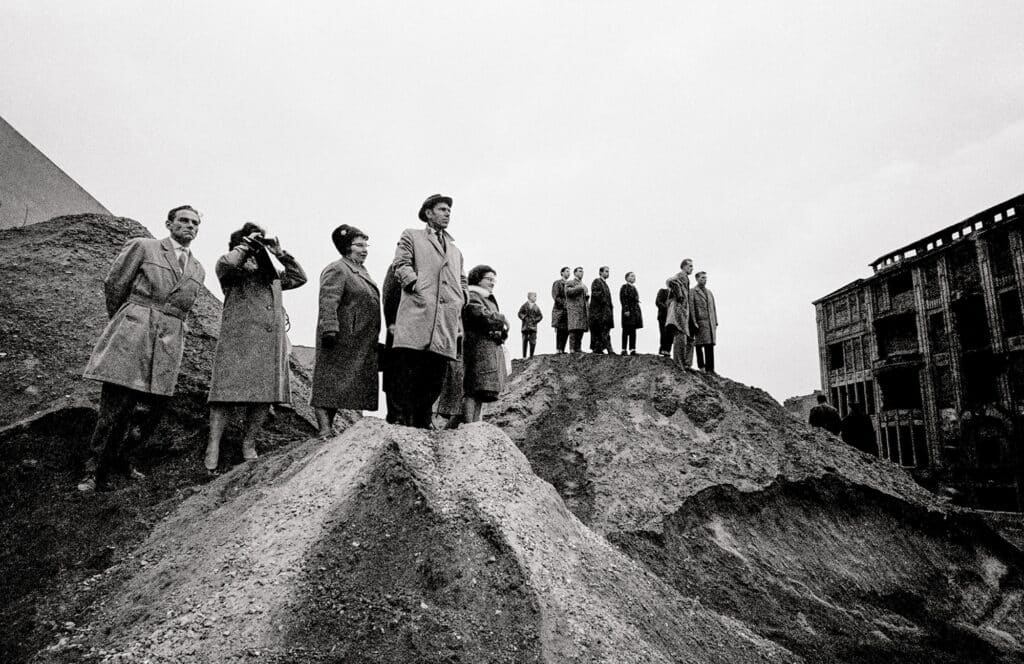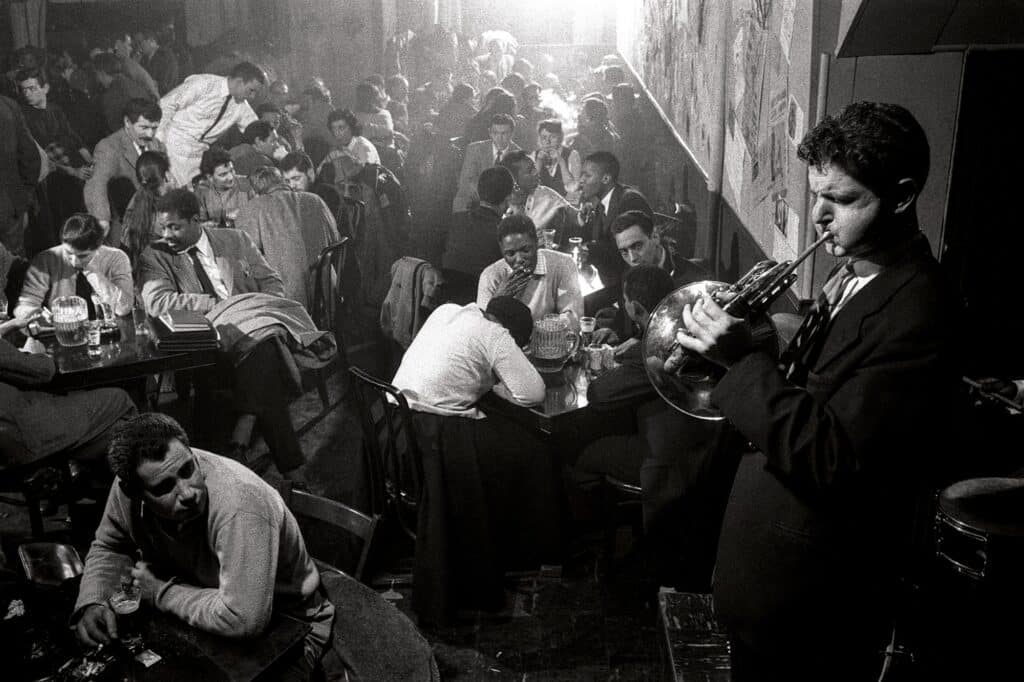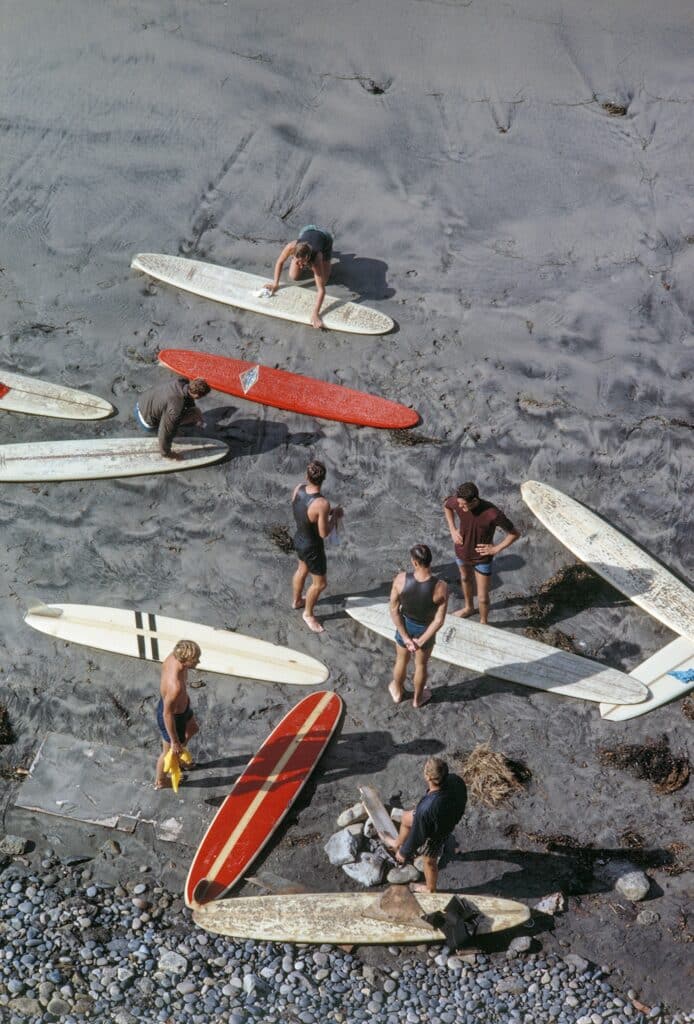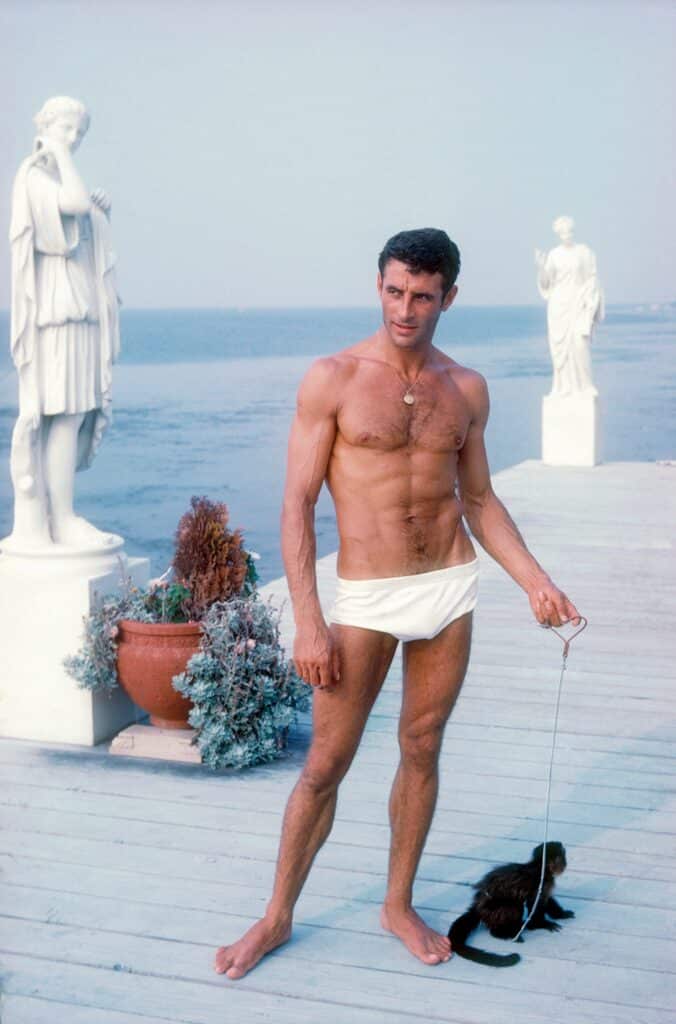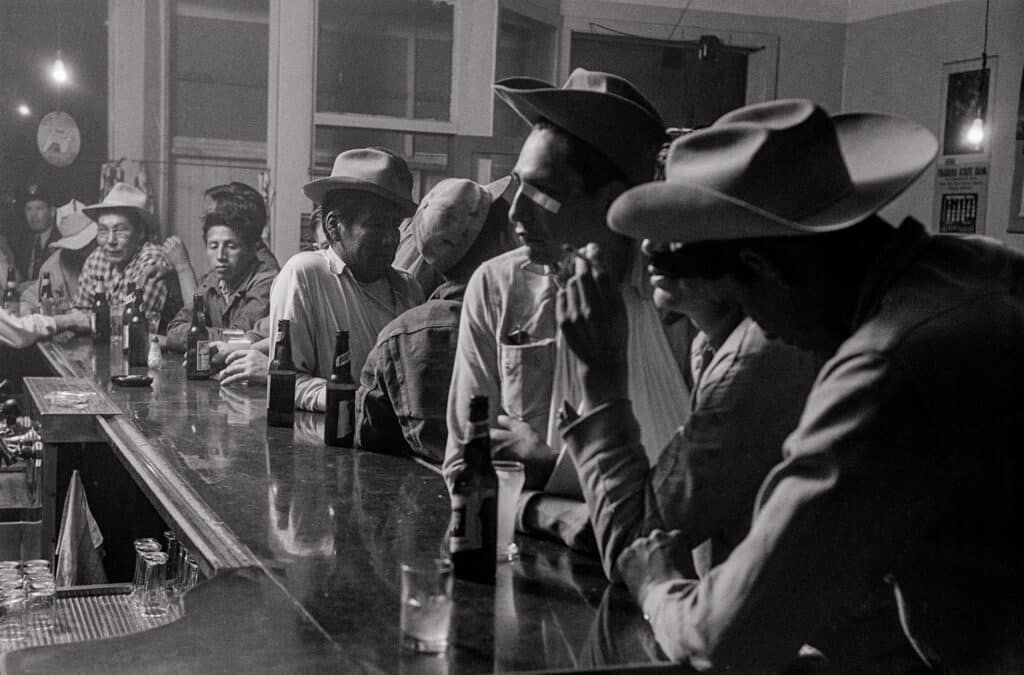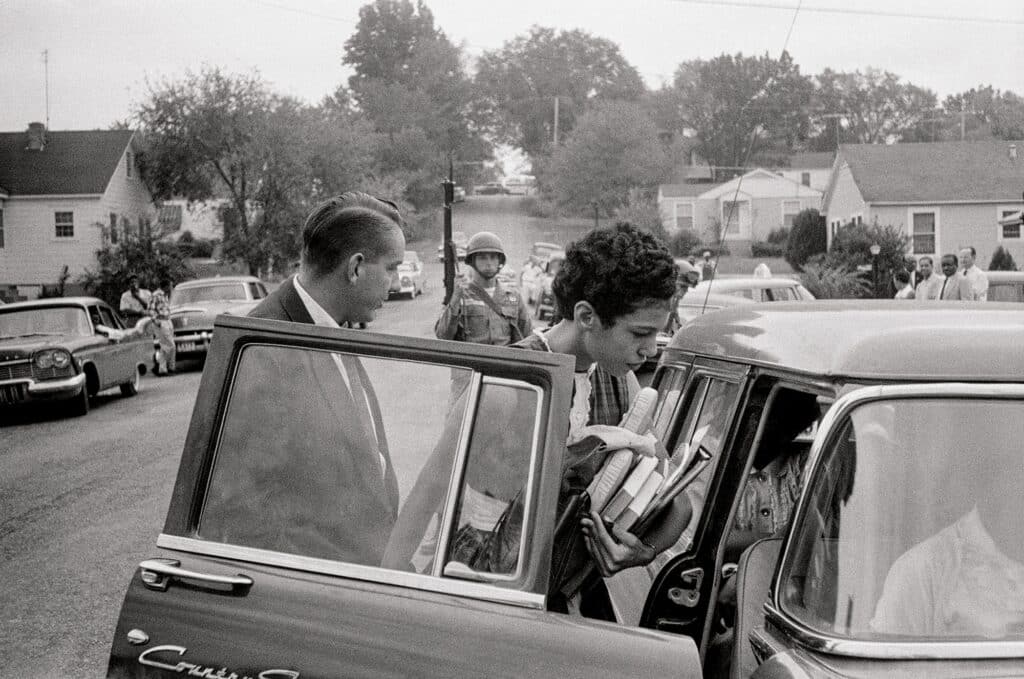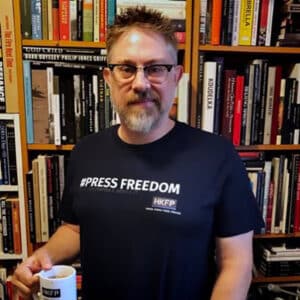Sarah Stacke knew photographer Burt Glint for the last 8 years of his life, till he passed away in 2008. In her introduction to Burt Glinn: Half a Century as a Magnum Photographer, she reminisces of the influence he had on her how it altered he on life, along with memories of the man himself, and his over 50-year career.
“I remember Burt’s wit and his lopsided grin when he told stories, which was a lot. He loved fine things, especially clothes. He had big opinions, high expectations, and an incredible grasp of the narrative, technical, and administrative aspects of photography .… For more than half a century, Burt covered it all: conflict, celebrities, wildlife, science, corporations, travel, society, culture. Yet, looking through his archive, his interests clearly emerge.”
Glinn was born in Pittsburgh, Pennsylvania in 1925. After serving in the Army between 1943 and 1946 during World War II, he enrolled at Harvard University, where he studied literature. While at Harvard, Glinn became the photographer and photo editor for the Harvard Crimson, the student newspaper. His work for the paper attracted the attention of LIFE, who hired him as a photographer in 1949. By 1950 he had become a staff photographer at the magazine, but he continued as a freelancer, which allowed him to work for other publications like Holiday, Esquire, Paris-Match, and Newsweek.
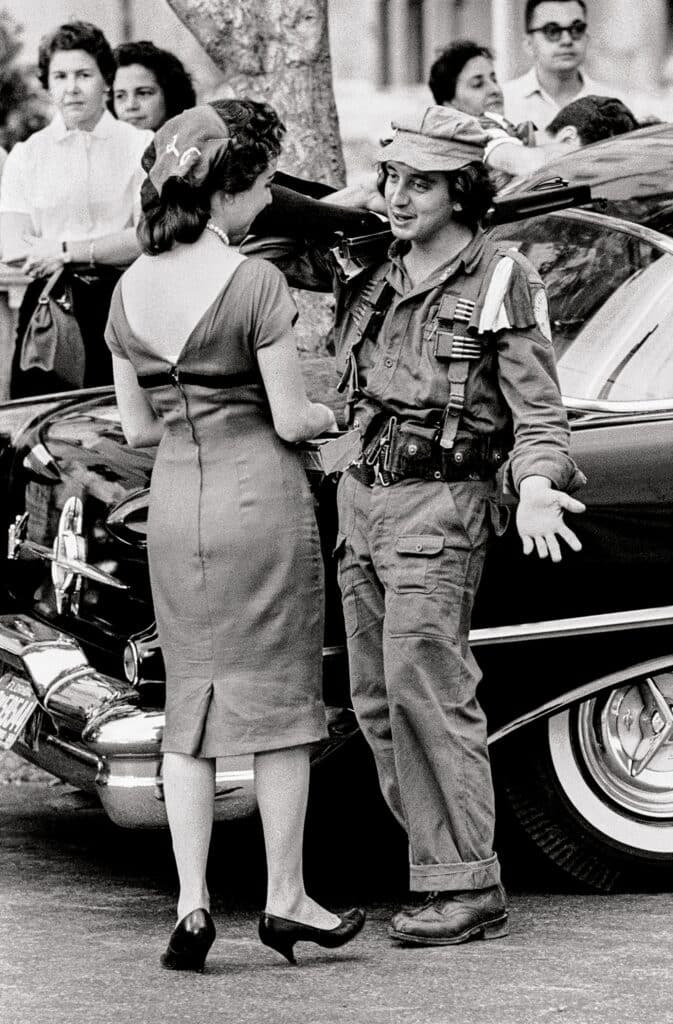
How to see the world
“Burt’s editorial eye is key. He really knew how to see the world by placing himself in it.”
Susan Meiselas
In 1951, Glinn became an associate member of Magnum Photos, along with Eve Arnold and Dennis Stock. Together they were the first Americans to join the agency. Glinn became a full member in 1954. He went on to be the president of Magnum between 1972 and 1975 and was reelected to the post in 1987. Glinn gained recognition for his coverage of the Cuban Revolution and his in-depth color series on the South Seas, Japan, Russia, Mexico, and California, each of which was published as a complete issue of Holiday.
“Burt’s editorial eye is key. He really knew how to see the world by placing himself in it. He was part of the generation who were lucky to work when magazine assignments were still plentiful and long. He came out of that tradition, which meant that he went places, then stayed and documented them over time. His photographs of the Berlin Wall being built were an example of incredibly good work,” says photojournalist Susan Meiselas in an interview with Stacke that is included in the book.
Throughout his career, Glinn regularly covered national and international historical events, cultural icons, and political figures for leading publications. And in the process, he traveled widely to wherever the job required him to be. His subjects ranged from The Little Rock 9 to the Cuban Revolution to the aftermath of the assassination of Martin Luther King, Jr. There is also work covering the building of the Berlin Wall, Queen Elizabeth II visiting New York, along with photographs of musicians, celebrities and sporting events. And there are religious communities, portraits of their leaders, and their events and rituals, which Glinn tried to photograph as much as possible throughout his career.
A career shaped by diversity
As Elena Prohaska Glinn, the photographer’s widow and custodian of his archive, recounts in her essay, “Burt began creating annual lists of his stories in 1948 and continued for 60 years. The lists reveal how diverse his interests were throughout his life. As an example, in 1959, one of Burt’s favorite years, he photographed more than 30 stories. It began when he abruptly left a New Year’s Eve party after hearing Cuba’s president Fulgencio Batista was on his way into exile and Fidel Castro was taking control. Burt caught the last Yellowbird flight from New York to Miami, then got a $20 charter plane to Cuba, where he spent nine days on the road with Fidel and his soldiers, documenting their triumphant procession into Havana. After some rest and assignments stateside, he covered the ultrarich and almost famous, often ridiculous, at Badrutt’s Palace Hotel St. Moritz in the haute Swiss Alps. Back in New York, he photographed Sammy Davis Jr., followed by the Beatniks.”
In the 1960s, he became one of the first photographers to enter the field of annual reports. Through that work, done over the next four decades, Glinn created a visual record of corporate America’s rapid growth. Throughout his career, he regularly covered national and international historical events, cultural icons, and political figures for leading publications.
As Meiselas recounts, this change to corporate work was not just a chance for Glinn to explore new work opportunities, but also a chance for Magnum to grow into new areas as well.
“Transitioning into corporate work, he understood something about seizing an opportunity, and that was part of his success and business acumen. The opportunity wasn’t just for himself, but for other members of Magnum too. He wasn’t initially specialized in corporate work. You see him going into Goldman Sachs with an editorial eye. You understand why it was especially valuable to a corporation at that time and why they kept hiring him year after year, over decades. He documented that institution growing and changing as it transformed to become a significant player in the financial world. I think looking closely at change came from Burt’s photojournalistic training and provides insight into his success with corporate work.”
Generosity is the key
Burt Glinn: Half a Century as a Magnum Photographer is the first book to cover the breadth of Glinn’s career. The book encompasses 100 photographs broken down into 5 major themes that run throughout Glinn’s career. But even broken into groups, the photographs show the depth of the subjects of Glinn’s work along with his technical abilities, outstanding eye, sense of timing, and ability to create dynamic photographs no matter the subject.
Stake described Glinn’s diverse career this way in an email exchange, “I think being able to look at the ebb and flow of Burt’s long career is valuable for emerging and experienced photographers. There were years he focused on editorial work, years he focused on commercial work, and years he was able to combine both. In long careers, there are often chapters with different types of photography work—whether that’s editorial, commercial, non profit, curating, writing, bookmaking, etc.—and that’s a good thing. In Burt’s case, the editorial work helped him be a better commercial photographer and vice versa.
And in a nod to the photographer himself, and to keep him physically in the book, each chapter is set off by a photograph of Glinn, and a color that harkens back to his sense of style. Glinn was known for his suits and ties and owned a wide range of both. Stacke has a box of some of Glinn’s old ties, which she and the design team used to study the colors that were in Glinn’s personal pallet. And using those as a base, they selected five colors that reflect Glinn color pallet for the chapter colors.
The other theme that runs through the book, especially in the essays and notes from his colleagues, including Gilles Peress and Larry Towell, was Glinn’s generosity.
Stacke’s memories from her time working with Glinn, as she recounted to me, further reinforce this: “The way Burt was generous with me was as a mentor. He shared his experience and knowledge with me, introduced me to people, and encouraged me to create and show photography work. Knowing how generous he was with me as a young photographer, it was really meaningful to learn that he was also generous with his peers. I think that can be harder because photography is a competitive field, but it’s clear that Burt shared his time, knowledge, experience, leadership skills, and even money with his peers.”
“Burt was one of the most generous members of Magnum. He always made time to help negotiate difficult internal and external situations.”
Susan Meiselas
Glinn was a versatile and skilled photographer whose eye was able to help shed light on some of the biggest stories of the second half of the 20th Century along with simple everyday life. But in many ways, his generosity maybe his greatest legacy in the eyes and minds of those who knew him. He was always ready to help younger photographers, introducing them to others and sharing his knowledge. Even his memorial, after his death in 2008, became a testament to his generosity, in that people who came made small donations that provided some of the seed money for the Magnum Foundation, a nonprofit organization that works to expand creativity and diversity in documentary photography through fellowships and awards. Even in his death he helped the next generation of photographers.
As Meiselas recounts in her interview, “Burt was one of the most generous members of Magnum. He always made time to help negotiate difficult internal and external situations. I’m sure he made connections for certain photographers into the worlds he knew, sharing his contacts and connecting them to his networks. That was my impression, and I think that’s his legacy. That kind of generosity is an inspiration for many to follow.”
Burt Glinn: Half a Century as a Magnum Photographer can be purchased though Elena Prohaska Fine Arts on her website here.

